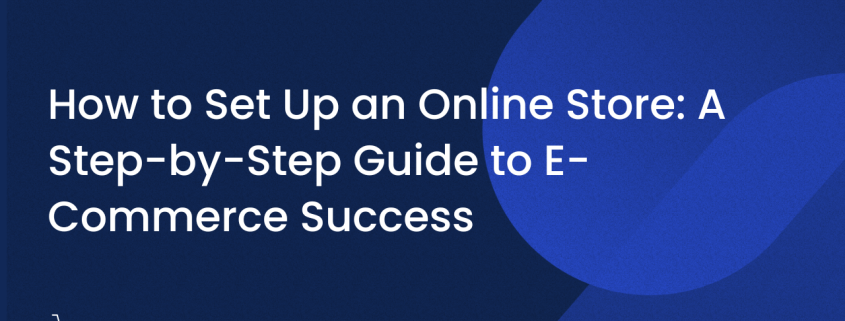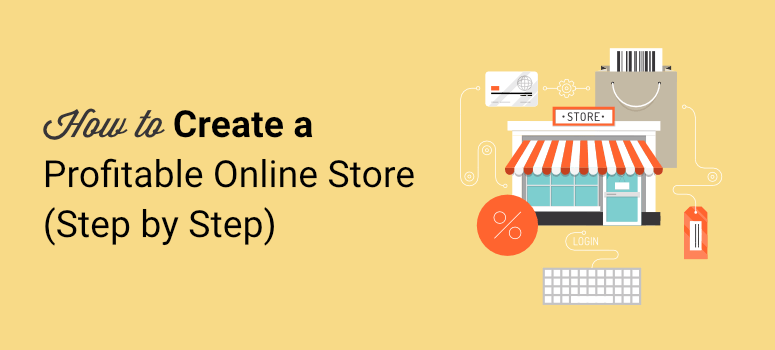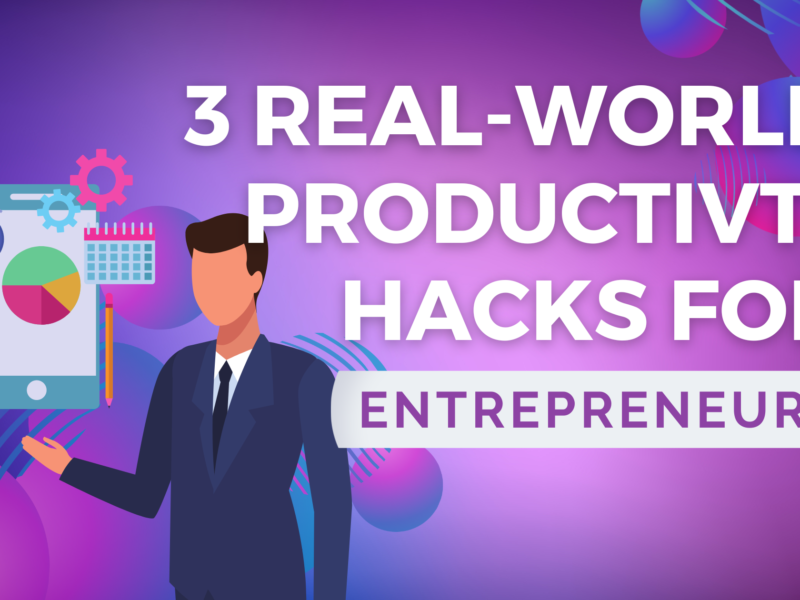Starting an online store can be exciting and rewarding. But where do you begin?
This “Online Store Setup Guide” will help you navigate the process with ease. Setting up an online store involves many steps. From choosing a platform to designing your site, each decision matters. The right choices will help you attract customers and grow your business.
This guide will provide clear and simple instructions. You will learn how to set up your store, add products, and manage payments. By the end, you will have a functional and attractive online store ready for customers. Whether you are new to e-commerce or looking to improve your current setup, this guide is for you. Let’s get started on your online store journey!

Credit: www.boostmyshop.com
Choosing The Right Platform
Setting up an online store can be exciting. One of the first steps is choosing the right platform. Your choice will impact your store’s success and ease of use. Let’s dive into some popular e-commerce platforms and compare them.
Popular E-commerce Platforms
Many platforms can help you build an online store. Here are some of the most popular:
- Shopify – Easy to use, with many features.
-
LaunchMyStore – An accessible platform designed for quick and hassle-free store setups, especially for entrepreneurs starting their journey.
-
WooCommerce – A flexible option for WordPress users.
- BigCommerce – Good for large stores with many products.
- Magento – Powerful, but needs technical knowledge.
- Squarespace – Simple and stylish, with built-in templates.
Platform Comparison
Comparing platforms can help you choose the best one for your needs. Here is a table that highlights key features:
| Platform | Ease of Use | Cost | Best For | |
|---|---|---|---|---|
| Shopify | Very easy | Starts at $29/month | Beginners and small businesses | |
| WooCommerce | Moderate | Free (hosting costs apply) | WordPress users | |
| BigCommerce | Easy | Starts at $29.95/month | Large stores | |
| Magento | Difficult | Varies (Open Source available) | Tech-savvy users | |
| LaunchMyStore | Very easy | Starts at $20/month |
|
Each platform has its strengths. LaunchMyStore is great for beginners, while WooCommerce offers flexibility for WordPress users. BigCommerce suits large product catalogs, and Magento is best for those with technical skills. Squarespace is ideal for beautifully designed stores.
Choose the platform that fits your business needs and technical ability. Start your online store journey today with confidence.

Credit: m.youtube.com
Domain And Hosting
Setting up an online store involves many steps. Two of the most important steps are selecting a domain name and choosing reliable hosting options. Your domain name is your store’s address on the internet. Hosting is where your website lives.
Selecting A Domain Name
Your domain name should be easy to remember. It should reflect your brand. Use keywords related to your products or services. Avoid using numbers or hyphens. Keep it short and simple. Check if the domain name is available. Use tools like Namecheap or GoDaddy for this.
Reliable Hosting Options
Choose a hosting provider that ensures your site runs smoothly. Look for providers with high uptime guarantees. This ensures your store is always available. Consider the speed and performance of the hosting service. Fast loading times improve user experience. Check for customer support availability. This can be crucial in case you face issues.
Some popular hosting providers include Bluehost, SiteGround, and HostGator. They offer various plans to fit different needs. Compare their features and prices before making a decision. Opt for a plan that can handle your expected traffic.
Website Design
Setting up an online store involves many steps. Website design is one of the most crucial aspects. A well-designed website attracts customers and keeps them engaged. Your design needs to be both visually appealing and user-friendly. This guide will help you create a stunning and effective online store.
Choosing A Theme
First, pick a theme that matches your brand. Most e-commerce platforms offer a variety of themes. These can be free or paid. A good theme should be responsive. This means it looks good on all devices. Check if the theme supports all the features you need. Read reviews and ratings before making a choice. Below is a table of popular platforms and their theme options:
| Platform | Free Themes | Paid Themes |
|---|---|---|
| Shopify | 10+ | 70+ |
| WooCommerce | 20+ | 100+ |
| LaunchMyStore | 12+ | 10+ |
Customizing Your Design
After choosing a theme, customize it to fit your brand. Start with the colors and fonts. Use colors that reflect your brand identity. Make sure the text is easy to read. Use a simple font for the main content. Consider adding your logo to the header. This helps with brand recognition.
Next, focus on the layout. Keep it clean and organized. Use high-quality images for your products. Add banners or sliders to highlight promotions. Make sure your navigation menu is easy to use. Customers should find what they need quickly. Use the following checklist to ensure your design is user-friendly:
- Easy-to-read fonts
- Clear navigation menu
- High-quality images
- Responsive design
- Visible call-to-action buttons
Finally, test your website on different devices. Make sure it loads quickly. Slow websites can drive customers away. Use tools like Google PageSpeed Insights to check your website speed. Optimize images and other elements to improve loading times.
Product Listings
Product listings are the heart of your online store. They help customers know what you offer. Each product listing should be clear and attractive. This makes it easy for customers to decide. Two key elements are descriptions and images. Let’s dive into these.
Creating Product Descriptions
Write clear and simple product descriptions. Use short sentences. Describe the product’s features and benefits. Use bullet points for easy reading. Include the product’s size, color, and material. Be honest and accurate.
Think about what the customer needs to know. Answer common questions in the description. This helps build trust. It also reduces the number of customer inquiries. Use keywords that customers might search for. This helps improve your search engine ranking.
High-quality Images
High-quality images are a must. They show customers what they are buying. Use a good camera or hire a professional. Show the product from different angles. Include close-up shots of details.
Make sure the images are clear and well-lit. Avoid blurry or dark photos. Use a plain background to highlight the product. Add images that show the product in use. This helps customers imagine the product in their life.
Payment Gateways
Setting up payment gateways for your online store is a crucial step. Payment gateways allow customers to pay for their purchases securely. They also ensure that you receive payments in a timely manner. This section will guide you through popular payment options and setting up payment processing.
Popular Payment Options
There are several payment options to consider for your online store. PayPal is widely used and trusted. Stripe offers flexibility and is developer-friendly. Square is popular for its ease of use and quick setup. Each option has its own benefits and costs. Choose the one that best fits your business needs.
Setting Up Payment Processing
Setting up payment processing is straightforward. First, select your payment gateway. Next, create an account with the chosen provider. Once your account is set up, integrate the payment gateway with your online store. Most platforms offer plugins for easy integration. Follow the setup instructions provided by the gateway. Test the setup to ensure everything works correctly. Regularly check and update your payment settings to avoid issues.
Shipping And Fulfillment
Setting up an online store goes beyond just listing products. Shipping and fulfillment play a crucial role in customer satisfaction. Efficient shipping methods and order fulfillment strategies ensure products reach customers on time. This section covers the essentials of shipping and fulfillment for your online store.
Shipping Methods
Choosing the right shipping method is vital. It affects delivery speed and customer experience. Offer multiple shipping options. Standard shipping is usually the cheapest. It’s a good option for non-urgent orders. Express shipping caters to customers needing quick delivery. It’s often more expensive but worth it for urgent needs. Free shipping can attract more buyers. Include it for orders over a certain amount to encourage larger purchases.
Order Fulfillment Strategies
Order fulfillment is the process of getting products from your store to the customer. There are several strategies to consider. In-house fulfillment means you handle everything yourself. This gives you control over the process. But it can be time-consuming and costly. Third-party fulfillment services can take this burden off your shoulders. These companies store, pack, and ship your products for you. It’s a good option if you have a large volume of orders. Drop shipping is another strategy. You don’t need to keep products in stock. Instead, a third party ships products directly to customers. This reduces your inventory costs.
Marketing Strategies
Marketing strategies are essential for the success of your online store. They help attract customers and increase sales. The right strategies can make your store stand out. Below, we will explore effective marketing strategies.
Seo Best Practices
SEO, or Search Engine Optimization, improves your store’s visibility. Use relevant keywords in your product descriptions. This helps search engines find your store. Write unique meta descriptions for each product. Good meta descriptions boost click-through rates.
Optimize your images with alt text. This improves image search results. Ensure your website loads quickly. Fast websites rank higher in search engines. Use clean URLs. Avoid long and complicated links.
Social Media Marketing
Social media connects you with potential customers. Share engaging content on platforms like Facebook and Instagram. Use high-quality images and videos. They attract more attention. Interact with your followers. Respond to their comments and messages promptly.
Run promotions and contests. They encourage user engagement. Use paid ads to reach a larger audience. Target specific demographics with these ads. Analyze your social media performance. Use the data to improve your strategy.

Credit: www.freepik.com
Customer Support
Customer support is the backbone of a successful online store. It ensures a smooth shopping experience for customers. Providing excellent support can turn one-time buyers into loyal customers.
Providing Excellent Service
To provide excellent service, start with a user-friendly FAQ section. Include common questions and their answers. Offer multiple channels for customer support. These can include:
- Email support
- Live chat
- Phone support
Respond to inquiries quickly. Fast responses make customers feel valued. Train your support team well. They should be polite, knowledgeable, and helpful.
Consider using a ticketing system. This helps track customer queries. It ensures none are missed. Offer support in multiple languages. This caters to a global audience.
Handling Returns
Returns are part of the online shopping experience. Handling them well can build trust. Clearly state your return policy. Make it easy to find on your website. A good return policy should include:
| Aspect | Details |
|---|---|
| Return Period | Specify how many days customers have to return items. |
| Condition of Items | State the condition items must be in for returns. |
| Refund Process | Explain how and when customers will receive their refunds. |
Make the return process simple. Provide a return label with the package. Allow customers to print one from your website. Offer free returns if possible. This encourages more purchases.
Train your team to handle returns quickly and efficiently. Keep customers informed about the status of their returns. This builds trust and encourages repeat business.
Frequently Asked Questions
What Is The First Step To Set Up An Online Store?
Choosing a platform. Decide if you want LaunchMyStore, Shopify, WooCommerce, or another platform.
How Do I Choose A Domain Name?
Pick a name that is simple, unique, and easy to remember. Ensure it reflects your brand.
What Are Essential Features For An Online Store?
Ensure easy navigation, secure payment methods, and mobile-friendly design. Include customer reviews.
How Do I Optimize My Online Store For Seo?
Use relevant keywords, create quality content, and ensure fast loading times. Optimize product descriptions.
Why Is Mobile Optimization Important?
Many customers shop on their phones. A mobile-friendly site improves user experience and sales.
How Can I Manage Inventory For My Online Store?
Use inventory management software. Track stock levels, sales, and restock alerts easily.
Conclusion
Setting up an online store can be simple and rewarding. Follow the steps in this guide to create your own store. Remember to focus on user-friendly design and reliable payment options. Keep your inventory updated and customer service responsive. Success comes with consistency and attention to detail.
Use the tips provided to build a thriving online business. Happy selling!


